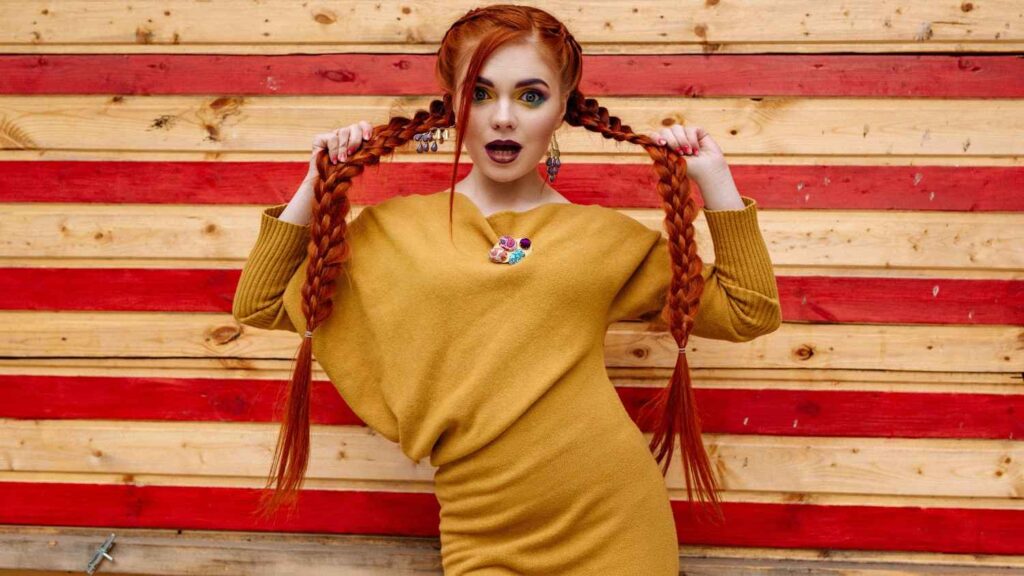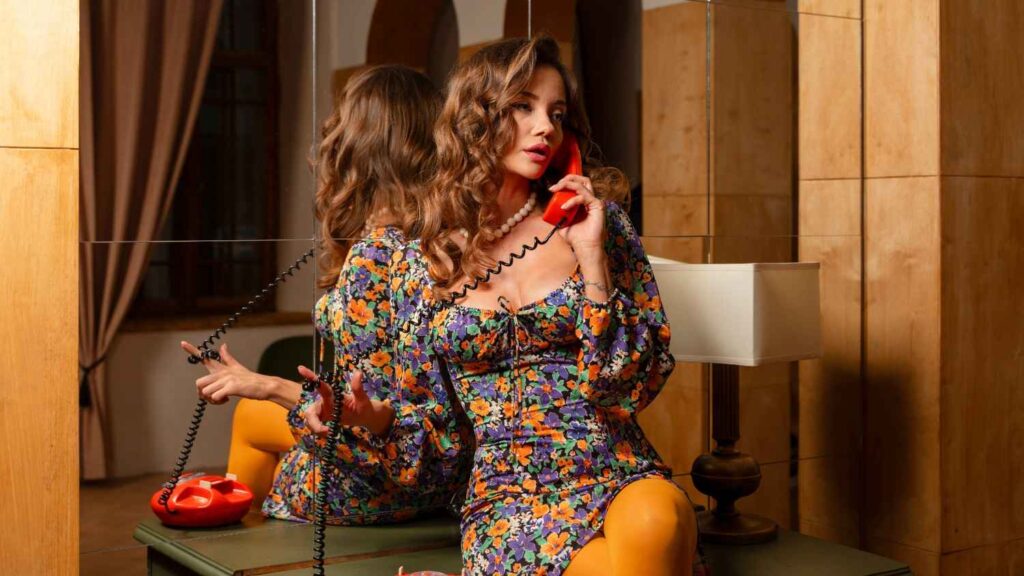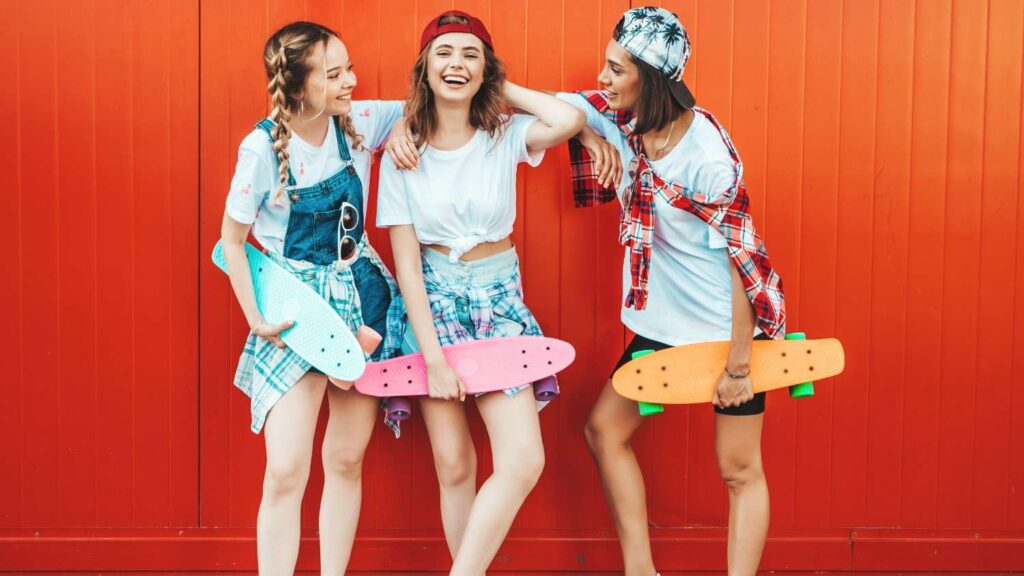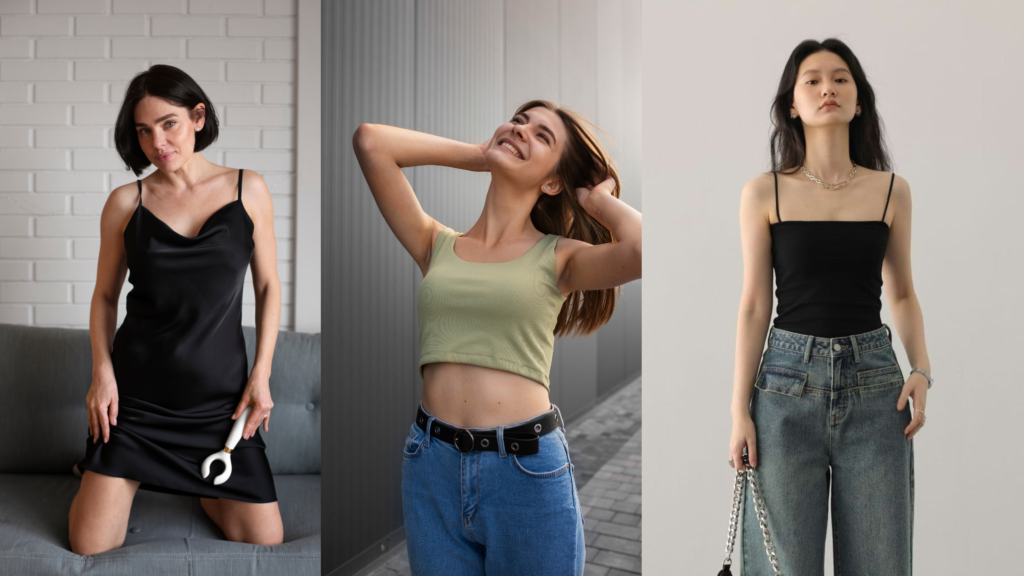70’s Outfits Fashion dominated attention in the 1970s with great inventiveness, brilliant colors, and a wide spectrum of subcultues guiding wardrobe decisions. From the free-spirited hippies to the glitzy disco go-ons, the era produced a range of classic designs that still find influence in fashion today. The main factors that made 1970 a fashion historical event will be discussed in this paper together with more on the designs that defined the clothing of the time.
Bell-Bottoms’ Arrival
Clearly one of the most identifiable pieces from 1970s fashion were the bell-bottom jeans. Because bellbottoms fit tightly around the waist and hips, which flared greatly below the knee, both men and women usually wore them. Originally a counterculture and rebel emblem, they became rather well-known very fast.

While trends changed, bellbottoms were well-known in corduroy, cotton, and even satin forms, denim stayed as their primary fabric. Usually, they pointed out the pants’ flare using matching platform shoes. Stars who most famously wore them in movies and shows, like John Travolta and Cher, helped to accentuate the style even more. Thanks for their ageless appeal, bell-bottoms are returning as part of the retro-inspired look.
The hippie impact and Bohemian trend
Especially, the bohemian or “boho” style from the early 1970s kept most of the free, relaxed attitude of the 1960s. Inspired mostly by the hippie movement, this style distinguishes itself with its flowing fabrics, floral themes, fringe, and relaxed form.
Peasant blouses, embroidered tunics, maxi skirts, and wide-brimmed hats were fundamental bohemian elements. People preferred natural fabrics like wool and cotton, and many outfits highlighted handcrafted touches like beaded necklaces or crocheted shawls. Still a major influence for designers such as Anna Sui and Isabel Marant.
Elegant evening attire and a frenzy of disco dancing
By the middle of the 1970s, disco music was sweeping the cultural landscape, and its energetic, happy appearance found expression in fashion. Disco fashion focused on creating unique, eye-catching clothing that glowed beneath a disco ball. Women’s clothes sometimes included metallic elements, sequins, and dramatic cuts like halter tops, plunging necklines, and high-slit dresses. Men and women particularly appreciate jumpsuits, as they offer a sleek, modest look that is both trendy and sensible for a night out dancing.

The disco era saw a peak for platform shoes. A few had soles five inches thick, which highlighted their glittery, ostentatious look. Men also adopted the disco style, wearing polyester suits in usually striking colors such as white, orange, or purple. In the movie Saturday Night Fever, John Travolta famously wore large lapels, flared slacks, and unbuttoned shirts that exposed a small amount of chest hair, thereby defining the look of the decade.
Rebellion of Punk Rock
Punk rock emerged as a distinct trend on the periphery of society, while disco dominated popular 70’s Outfits fashion. Punk clothing challenged the expected excesses of 1970s culture, as well as polished, glittery disco styles. Inspired by punk music’s DIY approach, the clothes were raw, edgy, and even provocative.
Band T-shirts, leather jackets, ripped jeans, and safety pins served as the main items of punk fashion. Punk looked great, often paired with Doc Martens or heavy boots, and complemented by dyed spiked hair. Vivienne Westwood and other designers created clothes reflecting the anti-establishment mindset of the movement, therefore helping to promote the style. Though its roots are revolting, the movement has become somewhat powerful and continues to inspire streetwear and high fashion.
Strong design and funky prints
Unafraid use of color and pattern was well-known in the 1970s. Large flowers, geometric patterns, and psychedelic designs were in style, often combined in a haphazard yet sophisticated manner. Men’s shirts, women’s dresses, and even wallpaper with these arresting designs turned everyday clothing into walking works of art.

Polyester is a popular fabric for these patterns because it is strong and vibrantly colored. One-piece dresses, kaftans, and wrap dresses, featuring swirling patterns and bold color combinations, held a special place in casual and semi-formal attire. In the 1970s, fashion was more about striking out than blending in; one way to make a strong fashion statement was with bright patterns.
Androgynous and gender-fluid style
Another significant aspect of 1970s design was the eradication of gender stereotypes in clothing. Once considered exclusive to men or women, the era’s growing feminist movement and shifting notions of gender roles began to blur these boundaries.
Men were also embracing more flamboyant, generally “feminine” fashions like silk shirts, scarves, and jewelry. Musicians like David Bowie and Marc Bolan of T. Rex exemplified this gender-fluid style, often donning glitter, platform shoes, and makeup. The 1970s inclination toward androgyny encouraged future generations to challenge and extend masculine and feminine fashion ideas.
Impact of television and celebrity
Television was crucial in deciding 1970’s clothing selections, as TV comedies like Charlie’s Angels, Three’s Company, and The Mary Tyler Moore Show showed the newest design trends to a wide audience. While Farrah Fawcett’s feathery hair became a must-have for haute couture, professional ladies felt Mary Tyler Moore’s fitted slacks and jackets to be a stylish option.

Musical icons like Cher, Diana Ross, and Mick Jagger greatly influenced the fashion of the 1970s. Both designers and fans turned to their bold stage looks, which often mixed boho, disco, and glam rock inspirations. Having emerged in the 1970s, the concept of “celebrity as fashion icon” continues to influence the fashion industry today.
Accessorizing the 1970s Approach
70’s Outfits Without adding the distinctive 1970s accessories, no conversation about their attire would be complete. Stars such as Jackie O and Elton John popularized big sunglasses, usually with multicolored lenses, making them a must-have item. The bohemian touch came from wide-brimmed headgear, headbands, and scarves; huge hoop earrings and beaded jewelry completed the look. 70’s Outfits Leather was a common material that provided some durability to both casual and more formal attire, such as belts, purses, and jackets.
Conclusion
In conclusion, 70’s Outfits fashion offered something for everyone and was a rather innovative and diversified medium during the 1970s. Whether your preference was for the free-spirited bohemian style, the glitter and glamor of disco, the rebel edge of punk, or the boldness of androgynous design, the 1970s presented a rainbow of ideas.



Pingback: Dress sneakers: The best way to look professional and feel good
Pingback: Fringe Dress: Perfect Party Outfits for a Night Out
Pingback: Retro Dresses: 70s Fashion Ideas
Pingback: Gold Bracelets: Perfect Gifts for Loved Ones
Pingback: Family Photo Outfits: Best Outfit Ideas for Family
Pingback: 1920s Outfits to Inspire Your Next Vintage Look